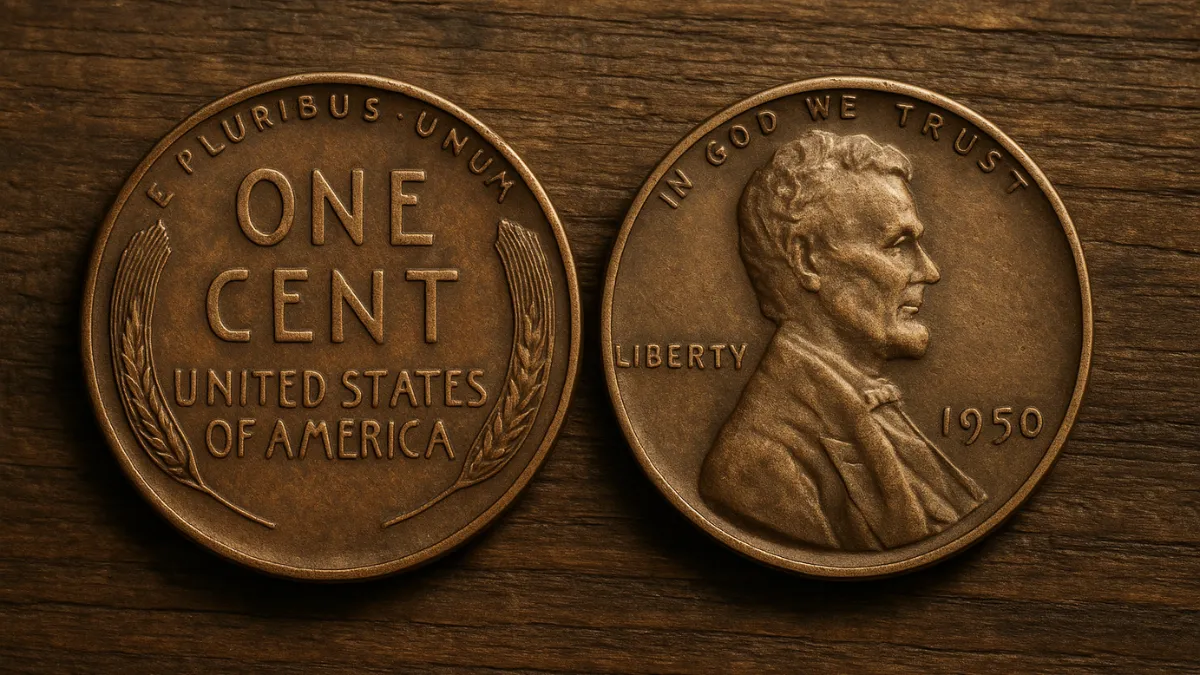Imagine Finding a Penny Worth Over $100,000. Think about stumbling upon a penny that’s actually worth more than $100,000. It might seem far-fetched, but it’s a reality for some. A unique Lincoln Wheat Penny, a small copper coin, was once sold for an astonishing $111,000.
This valuable coin might be sitting unnoticed in someone’s pocket or among spare change. Let’s find out what sets this coin apart and how you might come across one yourself.
What Is the Lincoln Wheat Penny?
The Lincoln Wheat Penny made its debut in 1909 in the United States. It’s nicknamed the “wheat penny” due to the two wheat stalks featured on its reverse side. These coins were produced until 1958 and have become favorites among coin collectors.
With their distinct design and historical background, these pennies hold special significance in the field of numismatics—the study of coins. While many are only worth face value, some rare types can be worth thousands of dollars.
Why Is One Worth $111,000?
Not every Lincoln Wheat Penny carries a six-figure value. The one that reached $111,000 is a rare type with a production mistake, known as a minting error.
Some of these errors include using the wrong metal, doubling of the design, or missing elements. Because they are rare, collectors are willing to pay a premium for them.
One standout example is the 1943 copper Lincoln Wheat Penny. During World War II, copper was needed for war supplies, so pennies were made from steel. Still, a few copper coins were mistakenly produced. These accidental versions are incredibly scarce—and one sold for over $100,000.
How to Spot a Rare Lincoln Penny
If you want to identify a rare and valuable Lincoln Wheat Penny, look for these features:
- Year of Minting: These pennies were made between 1909 and 1958. Coins from this period could be wheat pennies.
- Unusual Appearance: If you find a 1943 penny that’s copper rather than steel, it may be extremely rare.
- Minting Mistakes: Errors like double-stamped numbers, missing pieces of the design, or off-center prints can increase a coin’s worth.
- Use a Magnifier: A magnifying glass can help detect small flaws or features that could indicate rarity. When unsure, consult a coin dealer for expert advice.
Where to Look for One
You can potentially discover Lincoln Wheat Pennies in many everyday places, such as:
- Old Piggy Banks: Forgotten piggy banks might contain valuable old coins.
- Coin Jars or Wallets: Spare change often ends up in jars or wallets. Sift through them carefully.
- Loose Change from Stores: Rare pennies can occasionally turn up in everyday transactions.
- Family Collections: If your relatives collected coins, they may have some valuable pieces stored away.
- Flea Markets or Antique Shops: Sometimes rare coins are sold at low prices by people unaware of their value.
Often, these coins are unknowingly spent like any regular penny, making it more important to pay attention.
Should You Keep or Sell It?
If you discover a Lincoln Wheat Penny with unique features, here are a few steps you can take:
- Get It Evaluated: Have a coin expert or appraiser examine it to determine its value.
- Consider Selling: Valuable pennies can be sold to collectors or auctioned for a high return.
- Hold Onto It: Keeping it as a collectible or future investment is also an option.
- Add to Your Collection: If you enjoy coin collecting, this rare find could become a treasured addition.
Lincoln Wheat Pennies might look like regular coins, but some of them hold tremendous value. That rare penny could be closer than you think—maybe even hiding in your home.
So next time you get change, take a closer look. What seems like a regular penny might actually be a historical treasure worth thousands.
FAQs
What is the Lincoln Wheat Penny?
It’s a US one-cent coin produced between 1909 and 1958, featuring wheat ears on the reverse. It’s a favorite among coin collectors.
Why is the 1943 Lincoln Wheat Penny so valuable?
In 1943, due to a copper shortage during WWII, most pennies were made of steel. A few were mistakenly made from copper, making them extremely rare.
How do I know if my penny is valuable?
Check the date, inspect for errors like double stamping or unusual metals, and consult online resources or a coin specialist.
Can I find a rare Lincoln Penny in circulation?
Yes, rare pennies occasionally appear in everyday change, old wallets, or inherited collections.
Where can I sell a rare penny?
Once appraised, you can sell it through coin auctions, to private collectors, or on reliable online platforms.
Susan is a seasoned finance writer with a knack for breaking down complex money topics into clear, actionable advice. With years of experience in personal finance, investing, and market trends, she empowers readers to make smarter financial decisions. Her work has been featured in leading finance blogs and publications, where she combines sharp analysis with relatable storytelling. Whether it’s budgeting, wealth-building, or decoding the latest economic shifts, Susan’s mission is to help people take control of their financial future with confidence.
